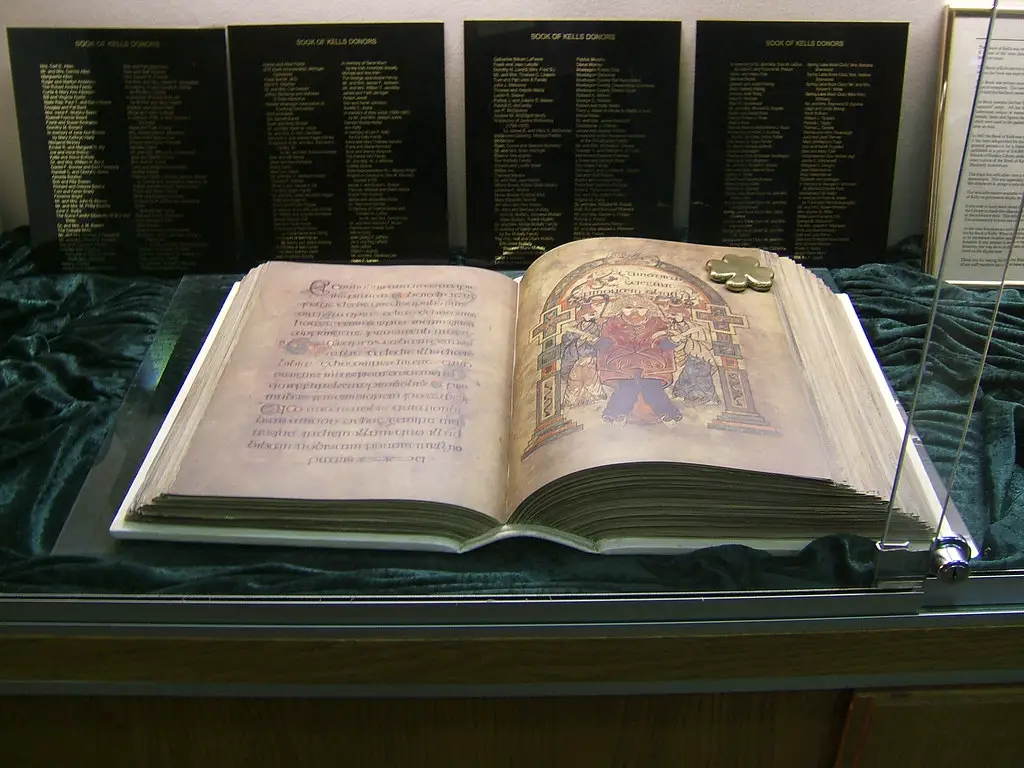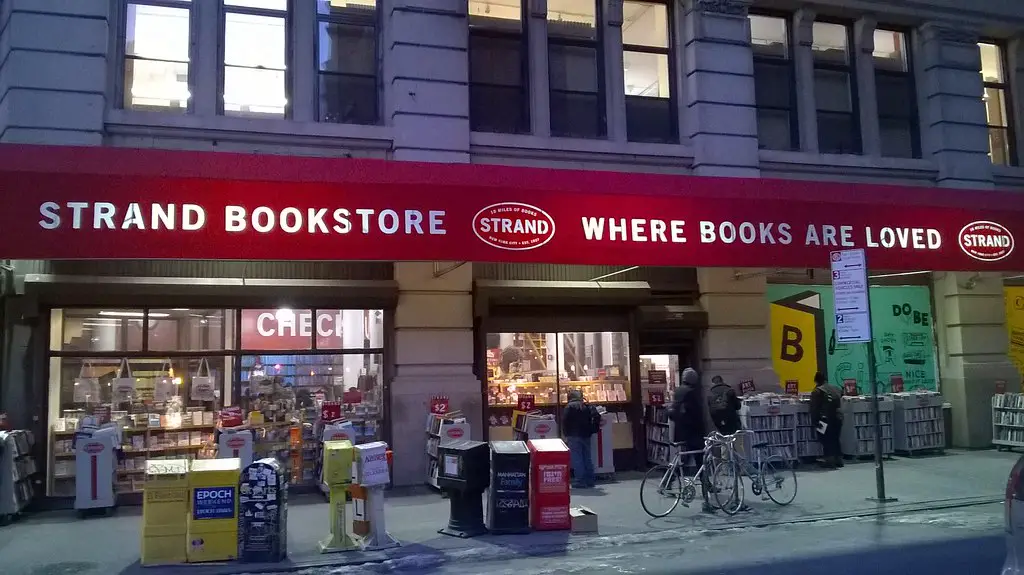The story of published books from paper form to printed page dates back to ancient times. Worldwide, written words found their way onto scrolled manuscripts made of papyrus or parchment, their edges sometimes mounted onto rollers for ease of opening and closing. Innovations in upgraded paper and binding techniques followed.
History Abridged: How Books and the Trade Began
The first century produced the original book-like religious works in India, written on palm leaves and sewn between two boards. Codices came into use as precursors to the modern book, with parchment pages mounted between covers. Early in Western Europe, to primarily instruct non-literate people in Latin-based Christian scriptures, monks created one-of-a-kind illuminated manuscripts. These works of art were hand-drawn and illustrated Gospel pictorial books of texts, beautifully represented by the spectacular 9th century Celtic Book of Kells.

The revolutionary Gutenberg metal movable-type printing press (1439-1450), catalyst in the publishing industry, facilitated the production of the printed page. This led to the publication of the Gutenberg Bible (1455) and the advent of costly books in print. Inexpensive, instructive, and entertaining paper pamphlet chapbooks reached children and the working class (in the 17th to 19th centuries). Cheap, sensational, serialized “penny dreadful” books were popularized during the 19th century. At long last, affordable mass-market trade books for the general populace made their way to the shelves of booksellers and into the hands of eager readers.
What we do know is this: Booksellers from the beginning of printed books to the 21st century and their loyal patrons still embrace and venerate the printed word. Much like actual books, it’s an idea that’s easy to get your hands and mind around.
The Booksellers (A Documentary Film)
“Getting the book to the right home is like asking a doctor what works to cure a patient. Even if they don’t like them, it’s their obligation. The only thing I regret are the books I never bought.”
“Every one of these shelves (300,000 books warehoused) has a story.”
“There’s a sense of adrenaline in books, someone has put their life energy into it.”
Perhaps there are none so devoted to the preservation of books from the earliest times as the booksellers of rare books, their work a craft unto itself. Captured in the documentary film produced and directed by D.W Young, The Booksellers (Prime Video) takes a behind-the-scenes look at the state-of-the-art practice of selling and collecting rare antiquarian books from the perspective of knowledgeable New York book scouts, sellers, and shop owners.
In today’s vernacular, these professionals are “evangelists” for books, cultivating customers and transmitting a further appreciation. Vocal participants include narrator and producer Parker Posey, Fran Lebowitz, Gay Talese, and Susan Benne. The story opens at the annual New York International Antiquarian Book Fair in New York City and seems to travel through time. Of note, the clock in the Park Avenue Armory Building where the exhibition is set displays a non-existent “impossible” time in a nod to the collectors in search of something desired or some treasure as yet unknown, perchance to find “what you aren’t looking for.”
Putting Books on a Pedestal
As The Booksellers documentary begins, authentic cartographers’ maps and covers of literature from such famed authors as James Baldwin, Franz Kafka, William Faulkner, Virginia Woolf, Langston Hughes, Jane Austen, and Oscar Wilde are highlighted on screen. The words of an anonymous writer speak volumes, underscoring the documentary’s theme:
“You said that we owe literature almost everything we are and what we have been.
If books disappear history will disappear and human beings will also disappear.
I’m sure you are right.
Books are not only the arbitrary sum of our dreams and our memory.
They also give us the model of self-transcendence.
Some people think of reading only as a kind of escape: an escape from “the real” everyday world to an imaginary world, the world of books.
Books are much more. They are a way of being fully human.”
The history of New York booksellers and bookshops unfolds, beginning with the fact that at one time, 4th Street in Manhattan, which is called “Book Row,” hosted 48 bookstores in a row across six blocks! Many flourished at first. Now down to one, the last standing is called The Strand. One family of three sisters owns and operates New York’s oldest bookstore, on 59th Street, the antiquarian Argosy Book Store.

Foresight and funds allowed the family to buy the building, so they “pay the rent” for the privilege of working there. Upstairs, they highlight a section of autographs, memorabilia, and ancillary goods. They give credit for building their trade to those who came before, including storied rare book dealer A.S.W. Rosenbach, female trailblazer dealers Rostenberg and Stern, and a cavalcade of others.
Booksellers, bookshop owners, and collectors (often one and the same) offer insights and comments throughout the film. In fact, booksellers are partners in building collections, which are deeply personal. And then, there’s the wonder of some books in print. The viewer is invited in to see some of the oddest and most unique books ever, one being a volume of life-size sketches of ‘fish’ or creatures from the ocean depths. Or the heavy two-volume set called The Catacombs of Rome. Better yet is a volume that contains a piece of real mammoth hair at the conclusion, dating back 15,000 years. Of course, there’s always the “smell of old books and the magic in beautiful editions.”
Trade professionals do mourn the computer’s arrival on the scene, lessening their role and amusement in the course of plying their craft—the hunt for a particular book. But despite incursions of the internet, some enthusiasts still open independent bookstores and become booksellers to “meet the needs that address their community.”
Rare book auctions, a whole separate subject unto itself, have moved from in-person bidding to online and over-the-phone battles, with bidders unseen. Bill Gates holds the record for the most expensive auction item purchased at $30.8 million, which he paid in November 1994 to obtain Leonardo da Vinci’s scientific writings, titled Codex Leicester.
Authors’ Book-Worthy Quotes
“There’s so much more to a book than just reading.” Maurice Sendak
“We really project into books this very subliminal belief that they’ll outlast us, that they’ll pass their stories along, our knowledge, our dreams, our visions, all of what is the product of human thought.” Susan Orlean
“Don’t you ever mind not having the money,” she asked suddenly, “in not being rich enough to buy all the books you want?” Edith Wharton House of Mirth
And the Award Goes to…Booksellers and Bookshops
On March 6, 2006, when Larry McMurtry (with writing partner Diana Ossana) won an Academy Award for his adapted screenplay of Brokeback Mountain, based on Annie Proulx’s short story, in his emotional and prescient acceptance speech, he thanked “all the booksellers in the world.” He reminded the audience that this was a “book before It was a movie,” as were most of the nominated films. He also thanked booksellers “from the humblest paperback exchange to the masters of the great bookshops of the world,” adding, “all are contributors to the survival of the culture of the book. A wonderful culture, which we mustn’t lose.” (American Booksellers Association, Industry News)
Eternal Shelf-Life
As one bookseller and collector mused, “The relationship of the individual to the book is very much like a love affair.” To have and to hold forever. Just so, to my way of thinking.
Keep calm and read on.
